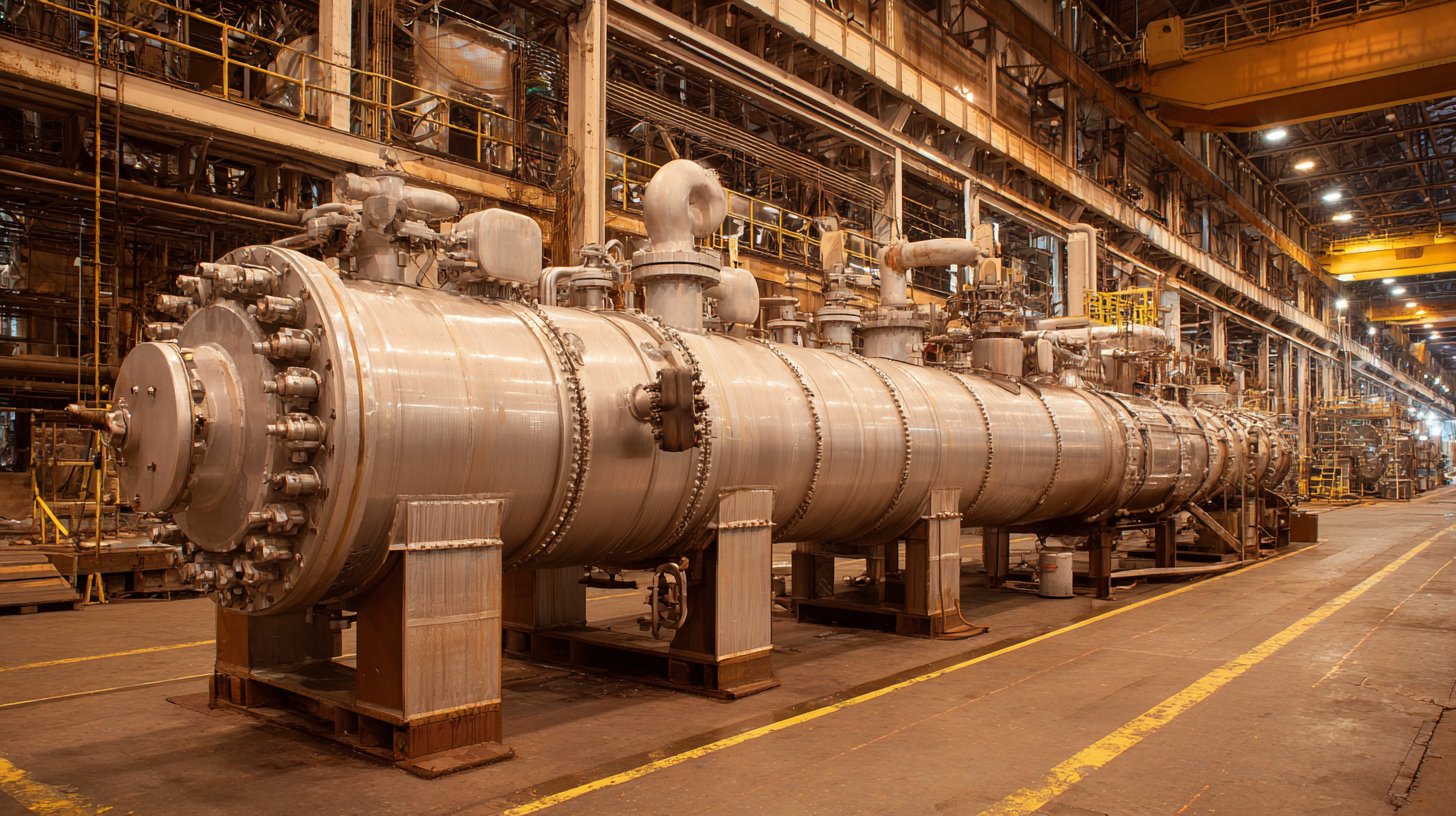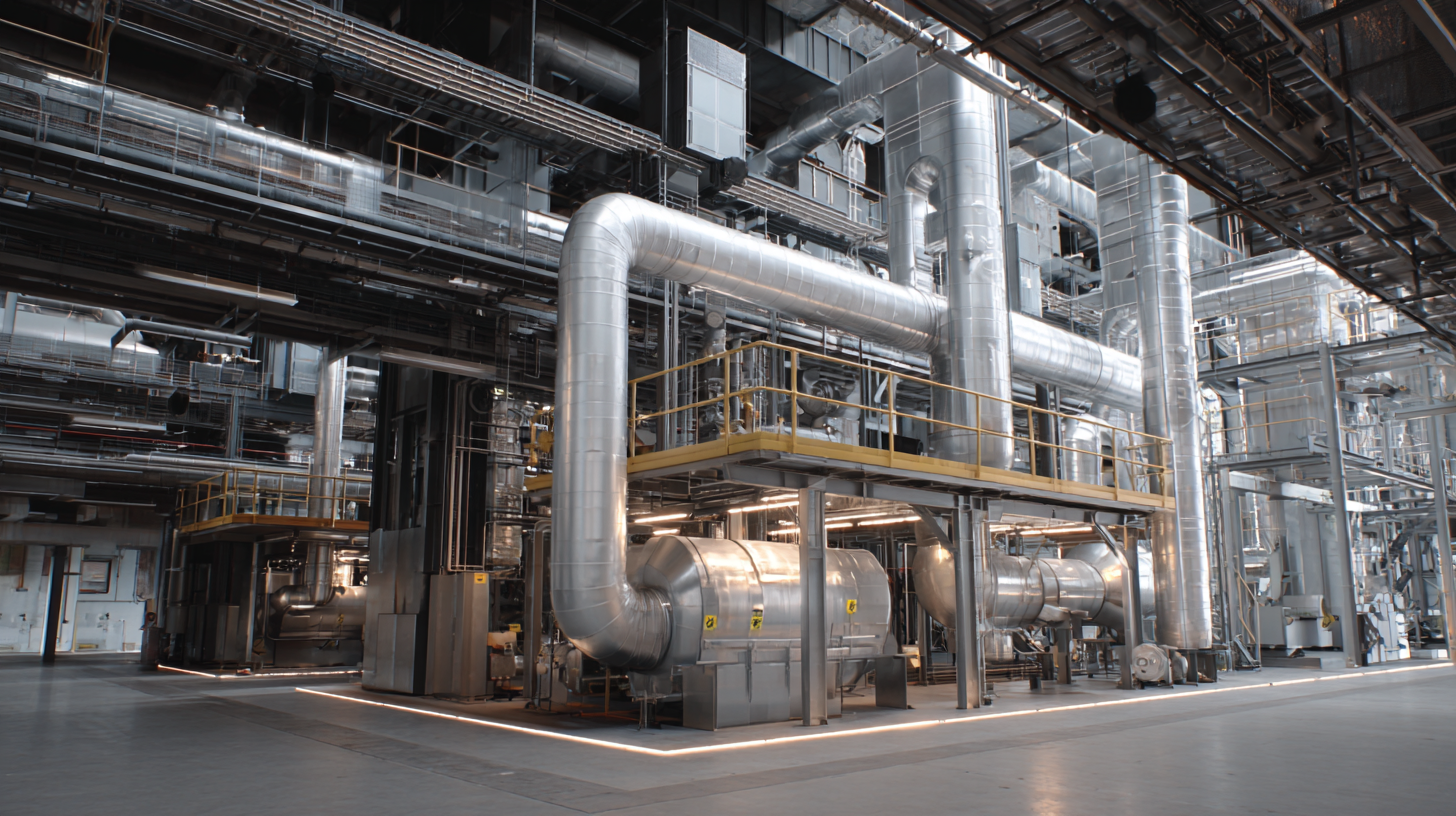Leave Your Message
In contemporary industrial processes, the optimization of energy efficiency is paramount, and one of the pivotal components driving this efficiency is the Heat Exchanger Furnace. These sophisticated systems facilitate the transfer of thermal energy between two or more fluids, significantly enhancing the overall productivity and sustainability of operations. By integrating cutting-edge technologies, Heat Exchanger Furnaces have emerged as essential tools that not only improve the thermal management of industrial processes but also contribute to reducing operational costs and environmental impact. As industries increasingly seek to streamline their production methods and minimize waste, recognizing the essential role of Heat Exchanger Furnaces in achieving these goals becomes crucial. This exploration delves into the myriad benefits these systems offer, underscoring their significance in modern industrial applications and paving the way for a more energy-efficient future.

Heat exchanger furnaces play a crucial role in modern industrial processes by enhancing thermal efficiency and optimizing energy consumption. These systems facilitate the transfer of heat between two or more fluids without mixing them, which makes them essential in various applications such as oil refining, chemical processing, and power generation. By recovering waste heat and reusing it, heat exchanger furnaces not only conserve energy but also significantly reduce greenhouse gas emissions, aligning industrial operations with sustainability goals.
In industrial settings, understanding the fundamentals of heat exchanger furnaces is vital for engineers and operators. These systems are characterized by their design, materials, and temperature control mechanisms, all tailored to meet specific process requirements. For instance, the selection of appropriate heat exchange surfaces can maximize thermal efficiency while minimizing fouling, which is the accumulation of unwanted material on heating surfaces. Proper maintenance and monitoring are also essential to ensure that these furnaces operate at optimal performance levels, thereby maximizing productivity and minimizing downtime.
Heat exchanger furnaces have become integral to modern industrial processes due to their ability to enhance operational efficiency. One of the key benefits of these furnaces is their capability to recover and reuse waste heat, significantly minimizing energy consumption. By integrating heat exchangers, industries can optimize their thermal management, leading to reduced operational costs and lower environmental impact. This aspect is increasingly crucial as businesses strive to meet sustainability goals while maintaining productivity.
Tips for implementing heat exchanger furnaces include: conducting regular maintenance to ensure optimal performance. Monitoring the furnace's efficiency can help identify potential issues early, preventing costly downtimes. Additionally, staff training on the operation and benefits of heat exchanger systems can empower teams to utilize these technologies effectively, maximizing efficiency gains.
Another significant advantage is the flexibility these furnaces provide in various applications, from chemical processing to metal manufacturing. Their ability to adapt to different operational settings without major modifications allows companies to streamline processes and improve overall workflows. By embracing heat exchanger furnaces, industries not only enhance efficiency but also position themselves competitively in the ever-evolving market.
When selecting a heat exchanger furnace for industrial processes, it is essential to consider key factors that ensure optimal performance and efficiency. First, assess the specific thermal requirements of your application. This includes understanding the temperature range, pressure conditions, and the type of materials to be processed. By identifying these parameters, you can narrow down your options to models that best suit your operational needs.

Next, evaluate the design and configuration of the heat exchanger furnace. Options may include shell-and-tube, plate, or finned-tube designs, each offering unique advantages depending on your process requirements. Additionally, consider the materials of construction and their compatibility with the substances being heated to ensure durability and minimize corrosion. Finally, look into the energy efficiency ratings and maintenance requirements of the units. A furnace that requires less maintenance and is energy-efficient can lead to significant cost savings and increased productivity over time. By carefully analyzing these factors, you can select the right heat exchanger furnace that enhances your industrial processes.
Heat exchanger furnaces play a critical role in optimizing modern industrial processes, ensuring efficient thermal transfer that is essential for various applications. However, maintaining and troubleshooting these systems is crucial for achieving optimal performance. Regular maintenance practices can significantly enhance efficiency, as studies indicate that well-maintained heat exchangers can operate up to 20% more efficiently compared to neglected units. Additionally, implementing predictive maintenance strategies, which utilize real-time data analytics, can minimize unplanned downtime by up to 30%. This proactive approach helps in early fault detection, ensuring that potential issues are addressed before they escalate into significant problems.
When confronting issues with heat exchanger furnaces, one must consider several key questions before deciding whether to repair or replace the unit. Factors such as the extent of the damage, operational efficiency, and the age of the equipment must be evaluated. For instance, if a heat exchanger shows signs of inefficiency due to design flaws or material degradation, upgrades or replacements can lead to substantial cost savings and improved operational reliability. Leveraging new offerings in software tools and consulting services can provide invaluable insights for optimizing heat exchanger design and operations, enhancing both performance and longevity in industrial applications.

Innovations in heat exchanger furnace technology are at the forefront of enhancing industrial efficiency and sustainability. As industries shift towards greener practices, the emphasis on energy-efficient solutions is growing. The integration of advanced technologies such as smart preheating systems within continuous heat treatment furnaces exemplifies a trend towards maximizing energy use while minimizing waste. This approach not only improves operational efficiency but also aligns with global carbon reduction goals, making it an attractive investment for forward-thinking industries.
Moreover, the market for heat pump water heaters is expected to witness substantial growth in the coming years, with projections reaching nearly $3.14 billion by 2033. This growth reflects a broader recognition of the importance of renewable energy solutions in both residential and industrial settings. As companies strive to meet regulatory standards and consumer demand for environmentally friendly alternatives, innovations in heat exchanger furnaces—combined with advances in related technologies—will continue to play a pivotal role in shaping efficient, sustainable industrial processes for the future.
| Dimension | Current Value | Predicted Value (2025) | Trend |
|---|---|---|---|
| Efficiency Rate (%) | 85 | 92 | Increasing |
| Average Lifespan (years) | 15 | 20 | Increasing |
| Average Maintenance Cost ($/year) | 5000 | 4000 | Decreasing |
| Energy Consumption (MWh/year) | 25000 | 18000 | Decreasing |
| Industry Adoption Rate (%) | 70 | 85 | Increasing |






